by Martin Green
About 20 years ago, my parents bought a Jaeger-LeCoultre Atmos from 1957 and sent it to the manufacture to have it restored. When it came back they placed it in their living room, where it has been ever since.
They have changed the furniture several times over the years, yet the Atmos remains to witness it. It has been running silently and reliably year after year. Except for dusting the case and adjusting the time by an hour in the spring and fall, no setting, maintenance, or servicing has been necessary
In fact, this is the clock to which my parents set their mechanical watches. I cannot imagine their house without the Atmos, and that is the profound effect this classic Jaeger-LeCoultre clock has on the many people who own one. While JLC has a nearly endless history of great achievements, to me the creation and continuation of the Atmos is one of its greatest.
Jaeger-LeCoultre Atmos Infinite: continuation is key
That the Atmos is still part of Jaeger-LeCoultre’s current collection after almost a century is not as obvious as it seems. Clocks are not exactly a hot commodity, and the Atmos is designed and built so well that customers don’t tend to repeat their purchases. You might have a drawer full of watches, but clocks need to fit your interior. And not every room is suitable for an Atmos.
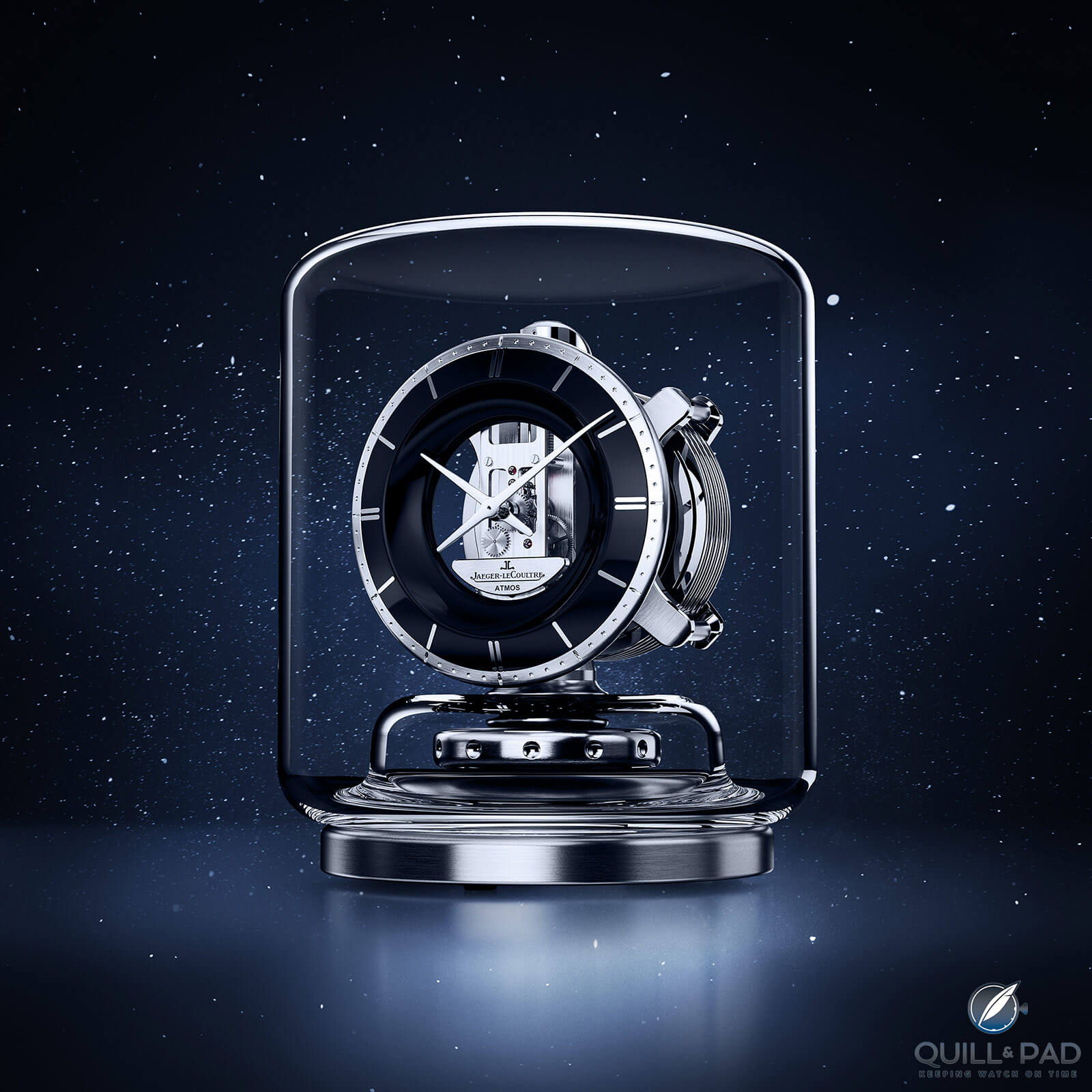
Jaeger-LeCoultre Atmos Infinite
But like many traditions, Jaeger-LeCoultre perpetuates this one regardless of trends. And in 2022, the brand even introduces two new models, Atmos Infinite and Atmos Hybris Mechanica Caliber 590 (Tellurium).
The Atmos Infinite demonstrates that this stunning clock in its most basic form is still evolving. While older, classic models have mainly been housed in a gold-plated brass cabinet, this new model has been placed within a glass cylinder. One can almost see this as a continuation of the design that Marc Newson created for the Atmos 561, 566, and 568 models.
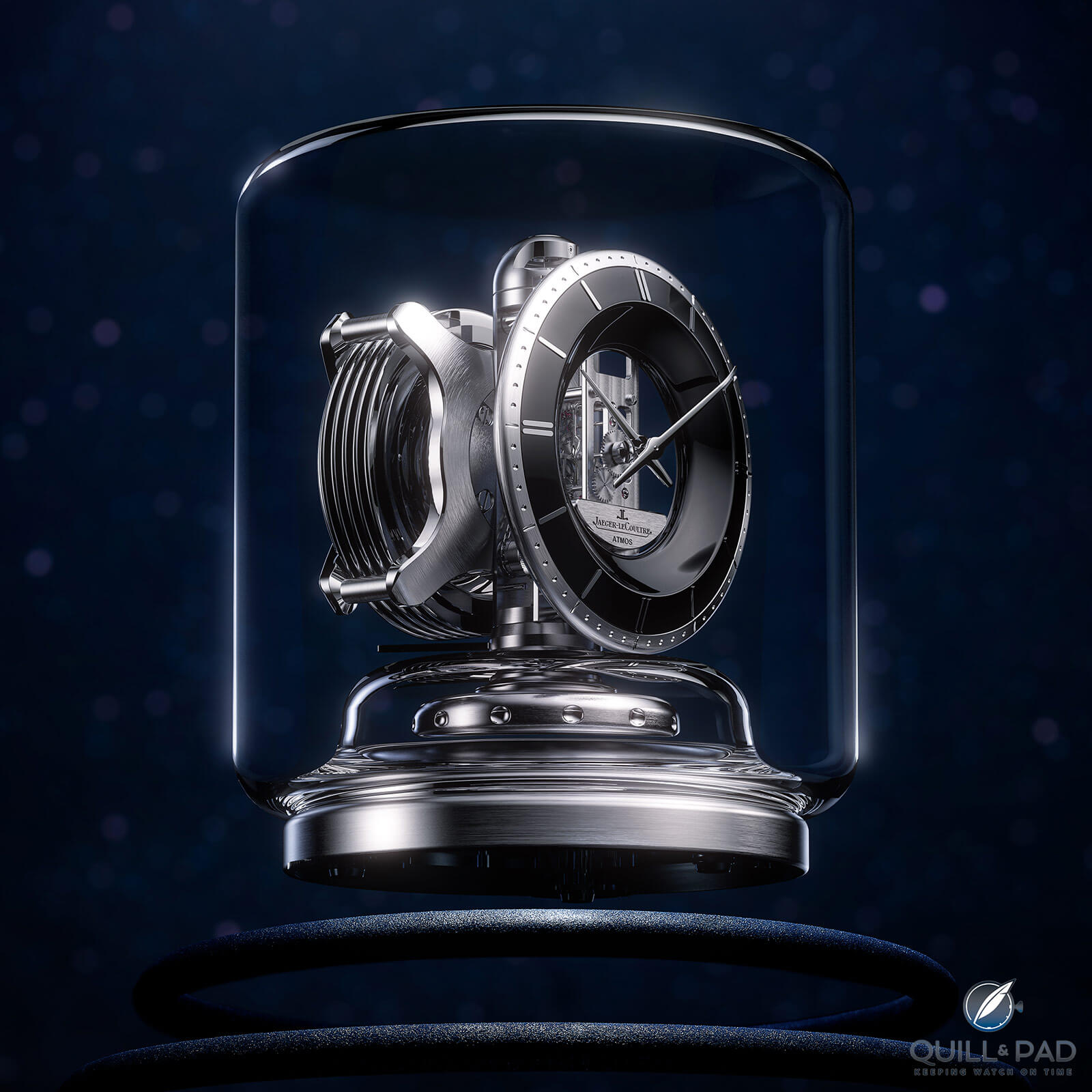
Jaeger-LeCoultre Atmos Infinite
It is bold and timeless at the same time. It would feel surprisingly at home on the USS Enterprise but also wouldn’t look out of place at Buckingham Palace.
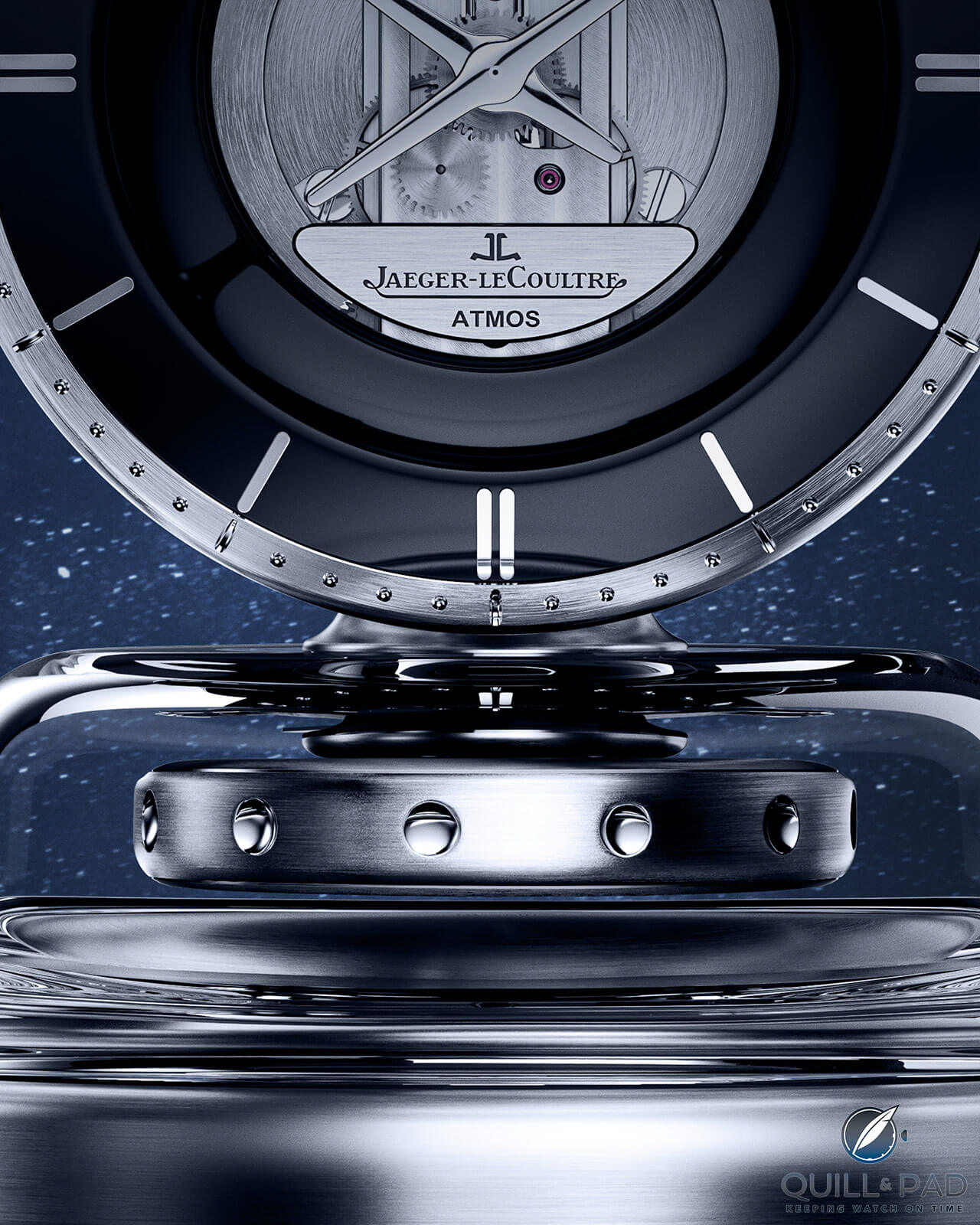
Jaeger-LeCoultre Atmos Infinite
A key to this is the black-lacquered dial consisting of two concentric rings over which the baton-shaped hour markers have been placed. This provides a lot of depth, something that the Atmos Infinite already has quite a bit of. The dial is surrounded by a rhodium-plated ring with minute markings, making this Atmos also very easy to read.

Jaeger-LeCoultre Atmos Infinite
Part of the appeal of the Atmos is its annular balance with 60-second oscillation. It both adds motion to the Atmos – further increasing the visual appeal of a clock that is all but motionless – and exudes a calming effect while underscoring the nearly perpetual aspect of the Atmos: a temperature variation of just one degree Celsius is enough to power this clock for more than two days thanks to the changing volume of a gas cylinder that winds the mainspring
Jaeger-LeCoultre Atmos Tellurium Hybris Mechanica Caliber 590: eyes on the sky
Jaeger-LeCoultre has quite a name to uphold when it comes to complications, in particular astronomical complications, so it comes as no surprise that the brand has also applied this treatment to the Atmos.
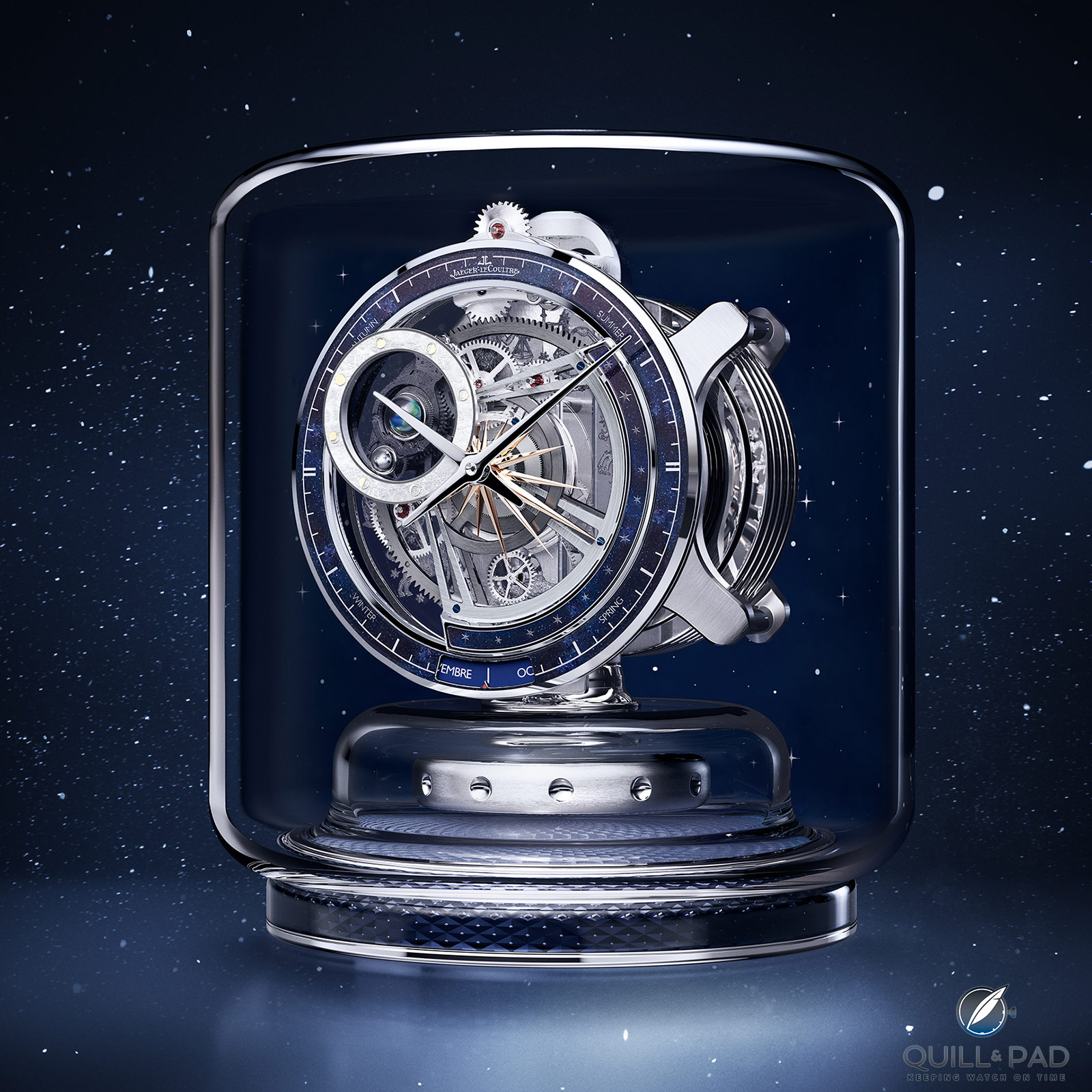
Jaeger-LeCoultre Atmos Tellurium Hybris Mechanica Caliber 590
The new Atmos Tellurium is the perfect example, including a tellurium displaying both the rotation of the earth around its axis and the orbit of the moon around our planet. Additionally, it displays planets revolving around the sun plus indications for the month, season, and zodiacal calendar.
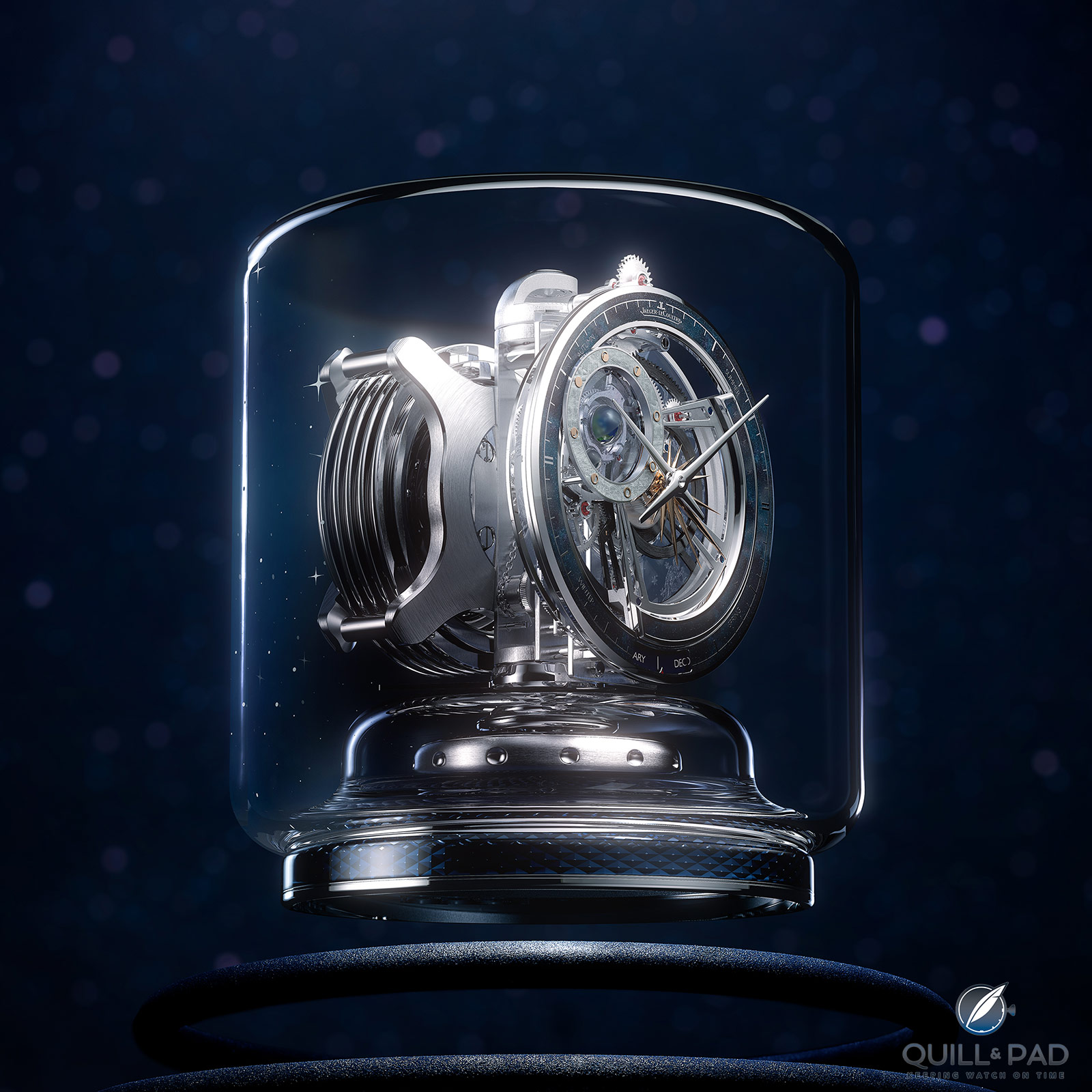
Jaeger-LeCoultre Atmos Tellurium Hybris Mechanica Caliber 590
A lot of attention was given to making these complications as precise as possible to match the quasi-perpetual character of the Atmos itself. The earth-and-moon disk circling the sun only deviates in its precision by one day every 390 years, while the moon orbiting the miniature earth is only off by one day every 5,770 years.
This is the most complicated Atmos clock that Jaeger-LeCoultre has ever created, requiring more than four years of research and development.
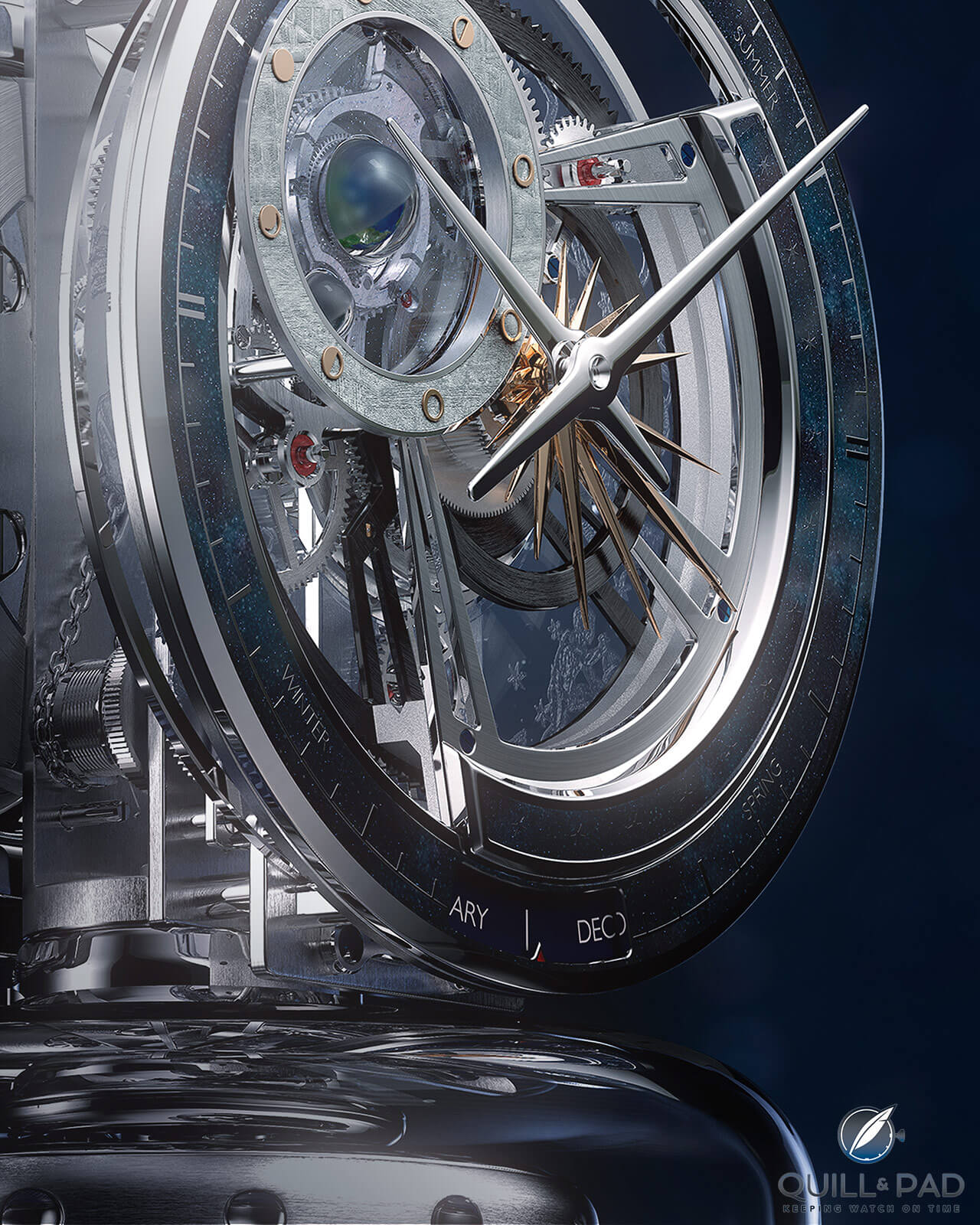
Jaeger-LeCoultre Atmos Tellurium Hybris Mechanica Caliber 590
While technically impressive, Jaeger-LeCoultre always likes to display such features in an artistic way. To achieve this, the brand applies different métiers d’art techniques. The miniature earth is painted by hand, allowing both the land and water to show their character. That contrasts pleasantly with the moon, whose surface is created using laser engravings.
A further nod to the heavens is provided by the earth-moon ring, which is made out of meteorite. Like the Atmos Infinite, the Atmos Tellurium Hybris Mechanica Caliber 590 is captured in a glass case, yet here part of it has been hand-painted to display a selection of constellations.
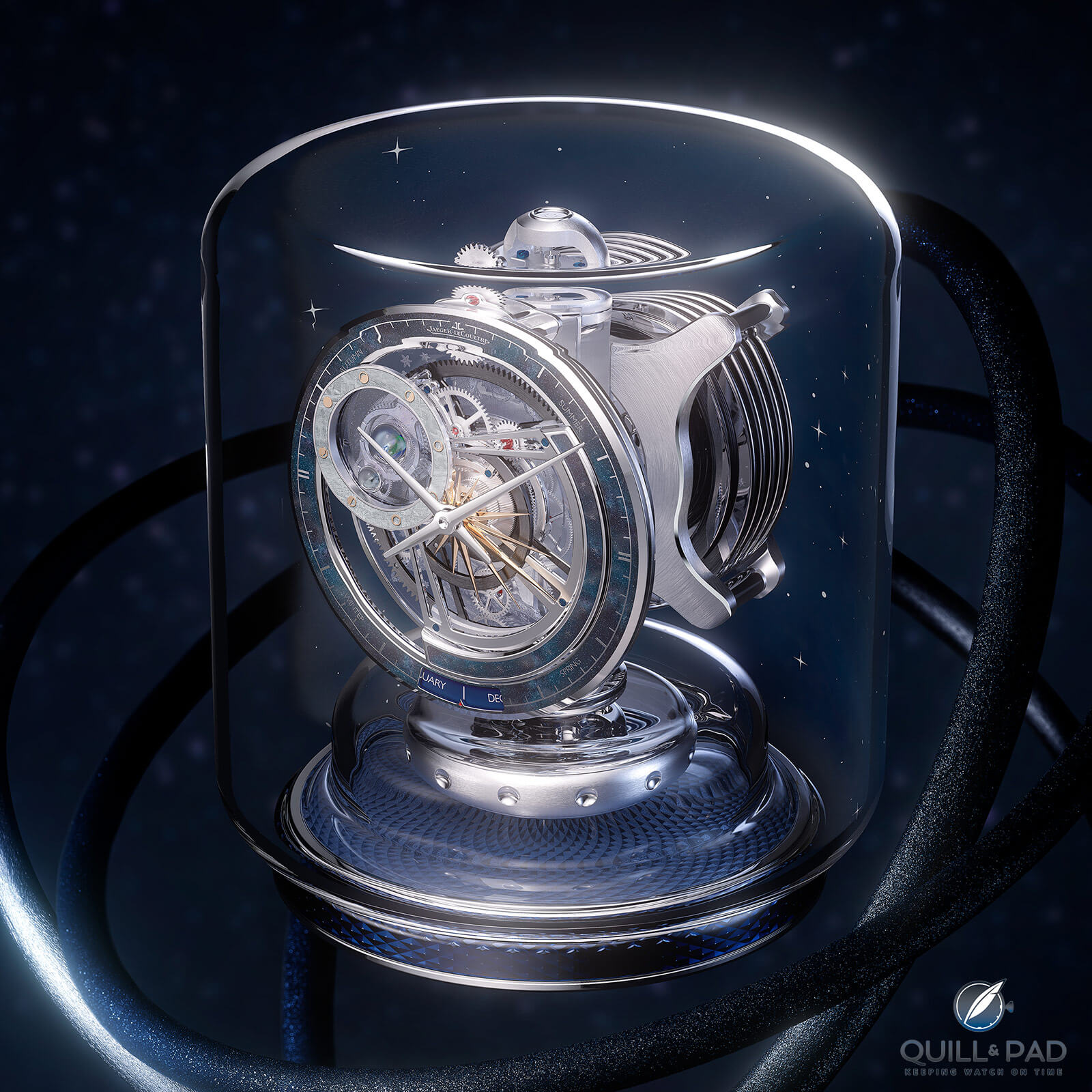
Jaeger-LeCoultre Atmos Tellurium Hybris Mechanica Caliber 590
Despite the artwork, we can still admire all the components that make up this complex movement from various angles.
Both of these new Atmos models perpetuate a Jaeger-LeCoultre tradition that has existed for almost a century, since the launch of this clock in 1928. These models also show that the Atmos and the technology behind it are still captivating. And after all this time, there’s still not been a better perpetual way to power a clock without external power sources successfully having been brought to market.
I might need to show these two new models to my parents – who knows, maybe they can fit another Atmos in their house somewhere, if only to show its powerful evolution achieved by staying pretty much the same.
For more information, please visit www.jaeger-lecoultre.com/us-en/jaeger-lecoultre-atmos.
Quick Facts Jaeger-LeCoultre Atmos Infinite
Dimensions: 215 x 253 mm
Movement: mechanical Jaeger-LeCoultre Caliber 570, wound by temperature fluctuation in air, nearly perpetual, 120 vibrations per hour, annular balance with 60-second oscillation
Functions: hour, minute
Cabinet: glass cylinder
Price: €13,000
Quick Facts Jaeger-LeCoultre Atmos Tellurium Hybris Mechanica Caliber 590
Dimensions: 215 x 253 mm
Movement: mechanical Jaeger-LeCoultre Caliber 590, wound by temperature fluctuation in air, nearly perpetual, 120 vibrations per hour, annular balance with 60-second oscillation
Functions: hour, minute; day/night indication, month, moon phase, zodiacal calendar
Cabinet: cylindrical, crystal glass hand-painted with the constellations
Decorative finishes: inlaid meteorite, engraving, miniature painting, lacquer
Limitation: 10 pieces
Price: €500,000
You may also enjoy:
Talking With Marc Newson: Jaeger-LeCoultre’s Favorite ‘Clock Designer’ Styles New Atmos 568
Choosing Your Favorite Flavor: Jaeger-LeCoultre Atmos 568 By Marc Newson
Oblivion, The Holy Trinity, And The Jaeger-LeCoultre Hermès Atmos
Leave a Reply
Want to join the discussion?Feel free to contribute!





















































Magical JLC. That Tellurium is true innovation on an already unique watch. True horological advances and not a simple flip of the sphere with repainting of colors to continue making the partridge dizzy
Half million dollar clock? Must be an April Fool joke, or payback for a cocktail party the author freeloaded. Ha ha.
Harry, I must admit that I was drunk with love when I saw this clock, even if no alcoholic beverages or other incentives were offered by JLC. It is an object of art, and to merely set it aside because of its price tag is a bit short sighted in my opinion. I do hope that a visit to a JLC boutique, where you can admire it in the metal, can change your view, and I am sure that it will be the pleasure of the staff to “freeload” you on this occasion with a coffee, tea, or, God forbid, a glass of champagne. When they do, rest assured that I won’t tell. 😉
If I am ever in the position to own one of these beauties, I will. I think the problem is that prospective buyers have no idea how good it is.
I believe JLC deserve respect for continuing with them. I suspect that it is almost an act of faith. That they refuse to let the art die.
Long may it continue
Hi Martin,
I absolutely love the Infinite one and of the two it’s the only one I could ever afford.
Can I know what you meant about not every room being suitable?
Is there something in particular that potential owners should be aware of?
Thank you
Hi Greg,
Thank you for your reply. With my comment I meant that while the Atmos can most certainly be placed in any room, it preforms best when it is placed in one where it can be admired and stands safely. They are quite easy going, to be honest, yet I believe that they do deserve somewhat of an altar.
Thank you, Martin, totally understand and agree! This is a “Pride of Place” piece.